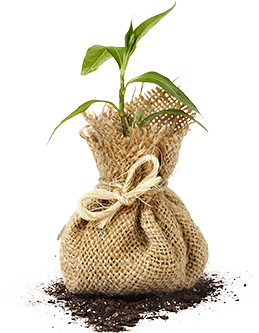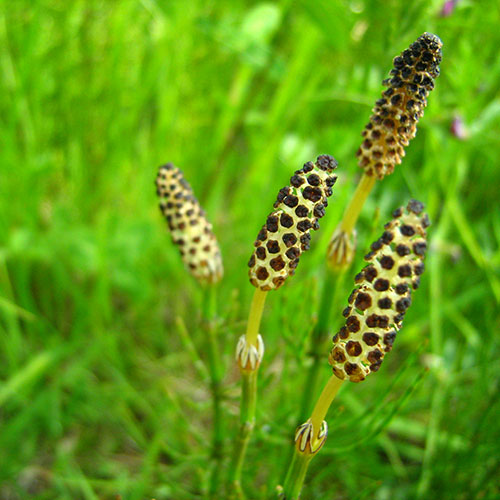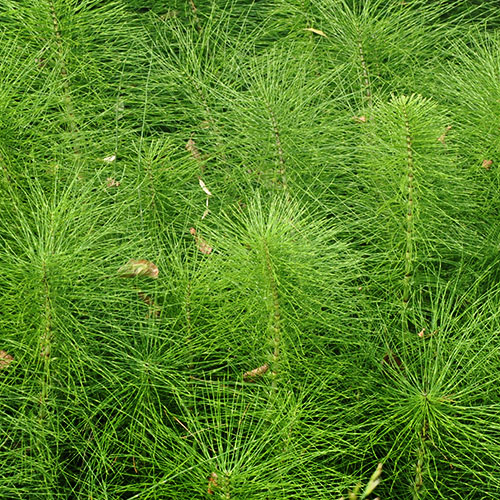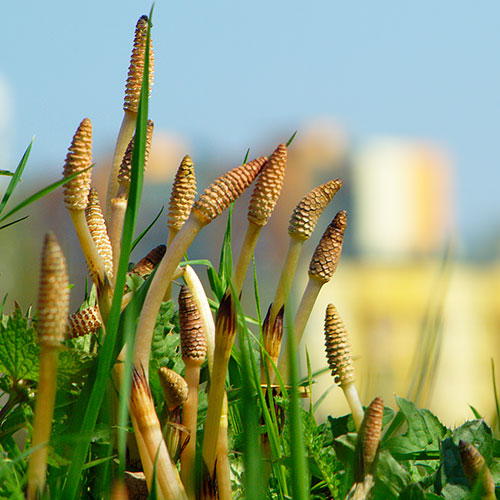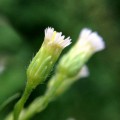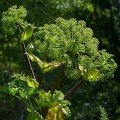The ekouizeto Ipouris or rats belonging to the family of Ippouroeidon. Also called “polykompi” & “kontylochorto”. Exists throughout Europe. It is found in cultures, embankments and roadside, in rocky and dry soils. It herbaceous, perennial plant with erect stems. The height reaches 60 cm. The vertebrae of the branches are weak, Pale green with black indentations on top. The plant produces sterile and fertile stems.
We use dried stems of the herb we collect early summer and throughout the growth period for their healing properties:
The warehouse is ekouizeto metals. The silica containing helps in the absorption of calcium and to prevent deposition of lipids in the arteries .
The ekouizeto is powerful hemostatic. Has laxative, antidiabetic, antidiarrhoeal properties . It also has healing properties for wounds and ulcers, Good results in disease and inflammation of the kidneys and the bladder, inflammation of the prostate anemia, the Agency's various measurement devices, fluid retention, to hemorrhoids, external inflammations, herpes, respiratory diseases, chronic bronchitis and tuberculosis. Prevents atherosclerosis, the amnesia and is considered a cancer herb, preventing cancer.
Historical data on the ekouizeto
The ekouizeto has survived since prehistoric times. There is here and 390 millions of years. As shown by the fossils, remained unchanged since the formed layers gaianthrakofora. The botanical name equisetum derives from "equus"(horse) and "sacta"(hair), because the canes are hard as horsehair. No blooms, but forms such as seed ferns, with which resembles. An articulated stems have rough texture. This is because, uniquely, the plant absorbs large amounts of silicon from the soil. The Romans used to wash pots and pans to, not only to clean but also to be rather sticky, said silicon, The plant was used in the Middle Ages as abrasive by cabinetmakers, for polishing utensils of tin, bronze and copper, and for the washing of containers and timber vessels for milk. Not so ancient plant could not avoid the myths and magic. Therefore it has been associated with various demons, frogs and snakes, and the devil.
Description herb:
The ekouizeto Ipouris or rats belonging to the family of Ippouroeidon. Exists throughout Europe. It is found in cultures, embankments and roadside, in rocky and dry soils. It herbaceous, perennial plant with erect stems. The height reaches 60 cm. The vertebrae of the branches are weak, Pale green with black indentations on top. The plant produces sterile and fertile stems. Used for their healing properties the dry stalks of herb collecting early summer and throughout the growth period.
Healing properties ekouizetou:
This acts as an astringent ekouizeto, hemostatic, mild diuretic, tonic and scar tissue. Helps in the absorption of calcium and to prevent deposition of lipids in the arteries. Reduces bleeding and heals the wounds. Considered a special remedy for cases of inflammation or benign enlargement of the prostate gland. Were used for osteoporosis, disorders of the lungs and kidneys, inflammation of the urinary tract, pains but the ears and skin disorders, eczema and acne. The ekouizeto is excellent astringent for the urogenital system. Reduces bleeding and heals the wounds thanks to the high content of silicon hydroxide. Acts as a mild diuretic and tonic and astringent action make it valuable for the treatment of incontinence and nocturnal enuresis in children. Considered a special remedy for cases of inflammation or benign enlargement of the prostate gland. Externally it is healing. It has been found that in some cases, reduces pain and heals rheumatism chilblains.
Aggregated:
- Powerful Haemostatic (reduces bleeding)
- Powerful diuretic
- Particularly rich in minerals
- Rich in calcium
- Helps in the treatment of prostate
- Helps recovery cystitis
- Vulnerary: Heals the wounds (washes)
- Against osteoporosis
- Against lung disorders
- Against inflammations of the urinary system
- Helps to ear aches (washes)
- Against skin disorders, Eczema
- Treatment of symptoms and acne (washes)
- Antirreymatiko (bathroom)
- Tissue tonic
- Reduces pain period
- Against arteriosclerosis
- Helps in cases of hair loss
- Helps in cases of incontinence
Alternative treatments ekouizeto:
The ekoyizeto is a great herb, and used variously:
- The powder of the dried plant is drunk as decoction.
- Build ointment from the dust and make a poultice for leg ulcers, wounds, irritation and chilblains.
- The juice the shoots are the best form of the herb for urinary tract disorders.
- Even use cotton dipped to nosebleed.
Prepare and infusion:
Pour a cup of boiling water 2 teaspoonfuls of dried herb 15-20 minutes.
We can also do it with Ekoyϊzeto a bathroom who has good results for rheumatic pain and chilblains (soak 100 g. herb in hot water for one hour and pour this water in the bath water)
End, It is beneficial to the eyes with washing (15g. half a pound of water as a decoction).
Guests currently searching, are reading here for: ekoyizeto properties, ekoyizeto, urine urinary herbs, herbs for incontinence, herbs for urinary incontinence, herbs for akrateia, herbs for Akra, herbs akrateias, akratia herbs, natural treatment of akrateias.







